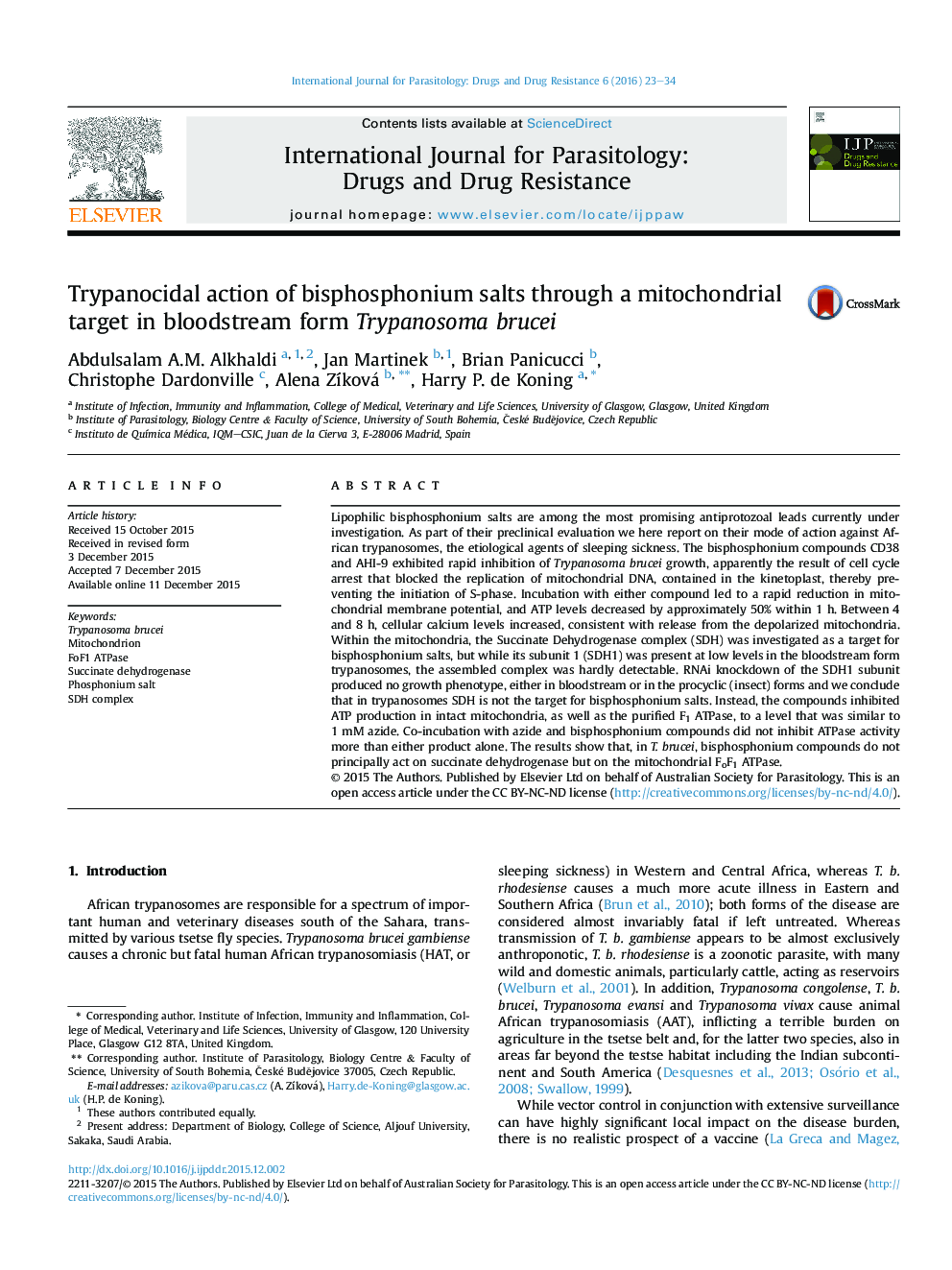| Article ID | Journal | Published Year | Pages | File Type |
|---|---|---|---|---|
| 2055125 | International Journal for Parasitology: Drugs and Drug Resistance | 2016 | 12 Pages |
•Bisphosphonium salts display highly promising antiprotozoal activity.•It has been reported that, in Leishmania, they act on the mitochondrial SDH complex.•We show that in Trypanosoma brucei SDH is not essential and not the drug target.•Instead, we present strong evidence that the F1F0 ATPase is the target.
Lipophilic bisphosphonium salts are among the most promising antiprotozoal leads currently under investigation. As part of their preclinical evaluation we here report on their mode of action against African trypanosomes, the etiological agents of sleeping sickness. The bisphosphonium compounds CD38 and AHI-9 exhibited rapid inhibition of Trypanosoma brucei growth, apparently the result of cell cycle arrest that blocked the replication of mitochondrial DNA, contained in the kinetoplast, thereby preventing the initiation of S-phase. Incubation with either compound led to a rapid reduction in mitochondrial membrane potential, and ATP levels decreased by approximately 50% within 1 h. Between 4 and 8 h, cellular calcium levels increased, consistent with release from the depolarized mitochondria. Within the mitochondria, the Succinate Dehydrogenase complex (SDH) was investigated as a target for bisphosphonium salts, but while its subunit 1 (SDH1) was present at low levels in the bloodstream form trypanosomes, the assembled complex was hardly detectable. RNAi knockdown of the SDH1 subunit produced no growth phenotype, either in bloodstream or in the procyclic (insect) forms and we conclude that in trypanosomes SDH is not the target for bisphosphonium salts. Instead, the compounds inhibited ATP production in intact mitochondria, as well as the purified F1 ATPase, to a level that was similar to 1 mM azide. Co-incubation with azide and bisphosphonium compounds did not inhibit ATPase activity more than either product alone. The results show that, in T. brucei, bisphosphonium compounds do not principally act on succinate dehydrogenase but on the mitochondrial FoF1 ATPase.
Graphical abstractFigure optionsDownload full-size imageDownload as PowerPoint slide
